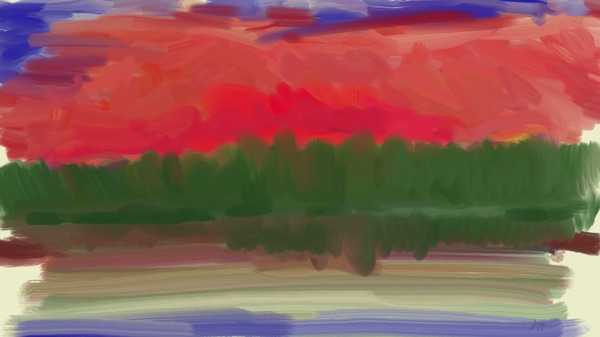She carefully stepped out of her flip-flops and stepped into the water. She walked with a bit of a stoop. Her hair was grey and short with curls. Scars on her knees suggested past surgeries. She held on to the railing as she walked down the steps.
I was sitting in the corner with hot, bubbling water swirling around me. I watched her as she got in. Our eyes met.
“Feels good,” I said.
She didn’t hear me and walked closer. “What… did you say?”
“It feels really good, doesn’t it?”
“Yes,” she said. And she sat in the water a few feet away from me. I introduced myself.
“I… I… am… I am 63,” she said.
“Well, happy birthday,” I said. “When is your birthday?”
“In… in… November.”
“Happy Birthday!”
She smiled and turned towards me and began to tell me the story of her life, but speaking didn’t come easy. She struggled with her words, searching for them and clearly finding many just out of reach. But she was quite creative with her hands, acting out the words that she could not find when she could produce no substitutes.
“I… have… aphasia,” she apologized.
“That’s fine,” I said. “Keep going. I’m following you fine.” She had been talking about girls at UT playing volleyball, I think, and how tall they were.
She told me how she came from Michigan. She held up her right hand palm towards us to show where she grew up. She pointed to Jackson when I said that my grandparents had lived there.
She tried to tell me about growing up. It sounded like they were very poor. She showed me a ring on her hand with a gold moon and a diamond Venus — did her father give it to her?
She went to school in Michigan and ended up in Austin at the university. Maybe she was a physical education professor. Or maybe a coach. She had that look about her. Lean. Muscular. She reminded me of Dr. Wynn at the lab school when we were growing up long ago (who come to think of it was probably about 63 way back then).
“How old…?” she asked, pointing at me.
“Fifty-four,” I said.
Her eyes widened. “You don’t… you… don’t…” She pointed to my hair, and I laughed.
“Oh, the grey hair’s coming,” I said. “You should see me when I don’t shave.”
Later, in the parking lot where I was waiting for the fair and industrious Trudy to pick me up, the woman came out with her duffle bag over her shoulder and her car keys in her hand. We talked until Trudy showed up.
The woman pointed at me and looked at Trudy. “He’s… he’s… a good… one.” She said. The unlocked the door of her creme-colored Mercedes sedan and drove off.
She never did tell me her name.

